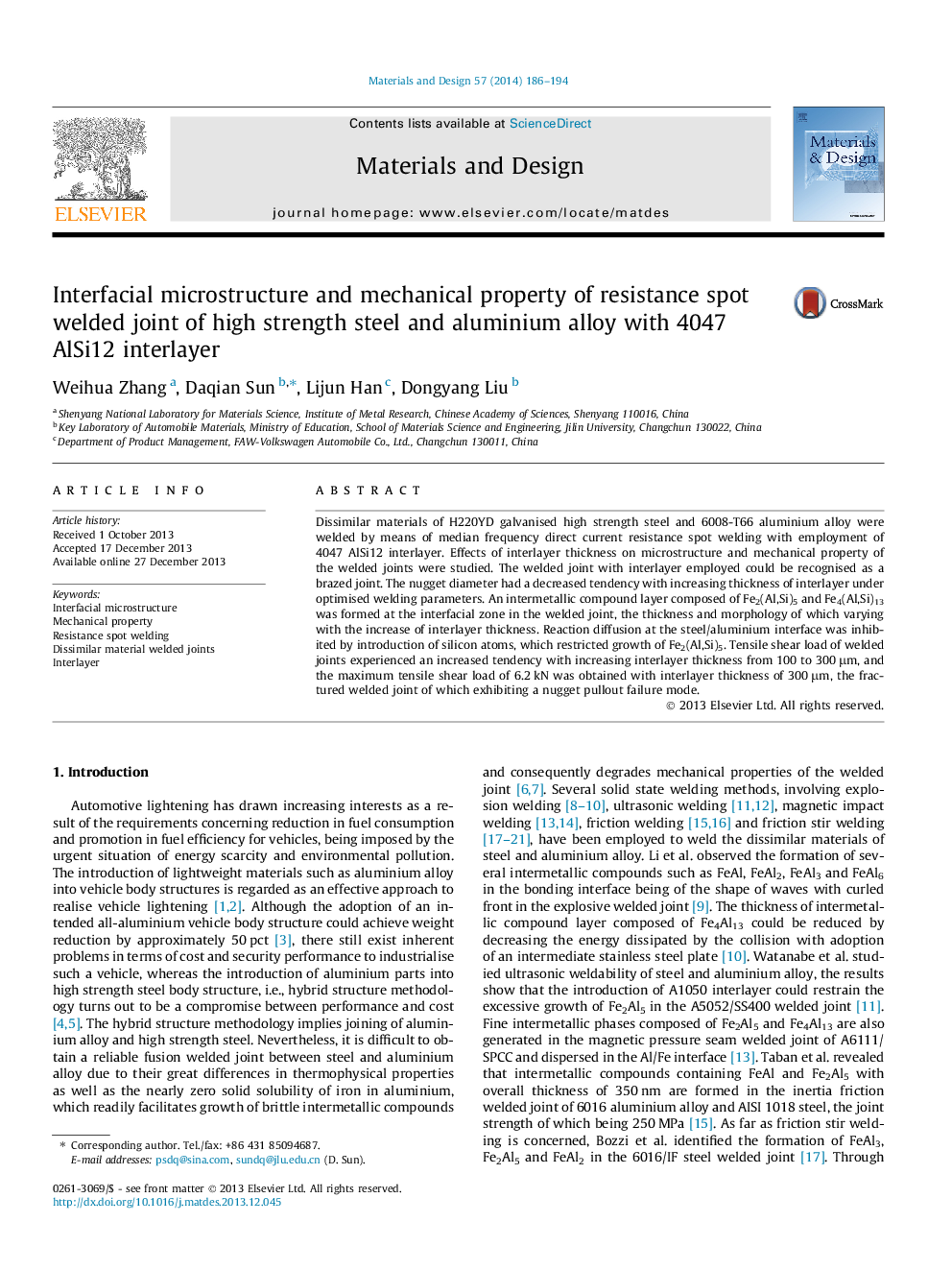| Article ID | Journal | Published Year | Pages | File Type |
|---|---|---|---|---|
| 829336 | Materials & Design (1980-2015) | 2014 | 9 Pages |
•Steel and aluminium alloy were resistance spot welded with interlayer successfully.•Welded joint of steel and aluminium alloy with 4047 interlayer was a brazed joint.•Fe2(Al,Si)5 and Fe4(Al,Si)13 were formed at the steel/aluminium interface.•Reaction diffusion at the interface was inhibited by introduction of silicon atoms.•Welded joint property was improved greatly with the interlayer thickness of 300 μm.
Dissimilar materials of H220YD galvanised high strength steel and 6008-T66 aluminium alloy were welded by means of median frequency direct current resistance spot welding with employment of 4047 AlSi12 interlayer. Effects of interlayer thickness on microstructure and mechanical property of the welded joints were studied. The welded joint with interlayer employed could be recognised as a brazed joint. The nugget diameter had a decreased tendency with increasing thickness of interlayer under optimised welding parameters. An intermetallic compound layer composed of Fe2(Al,Si)5 and Fe4(Al,Si)13 was formed at the interfacial zone in the welded joint, the thickness and morphology of which varying with the increase of interlayer thickness. Reaction diffusion at the steel/aluminium interface was inhibited by introduction of silicon atoms, which restricted growth of Fe2(Al,Si)5. Tensile shear load of welded joints experienced an increased tendency with increasing interlayer thickness from 100 to 300 μm, and the maximum tensile shear load of 6.2 kN was obtained with interlayer thickness of 300 μm, the fractured welded joint of which exhibiting a nugget pullout failure mode.
